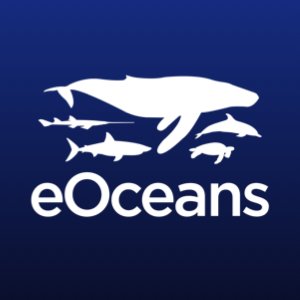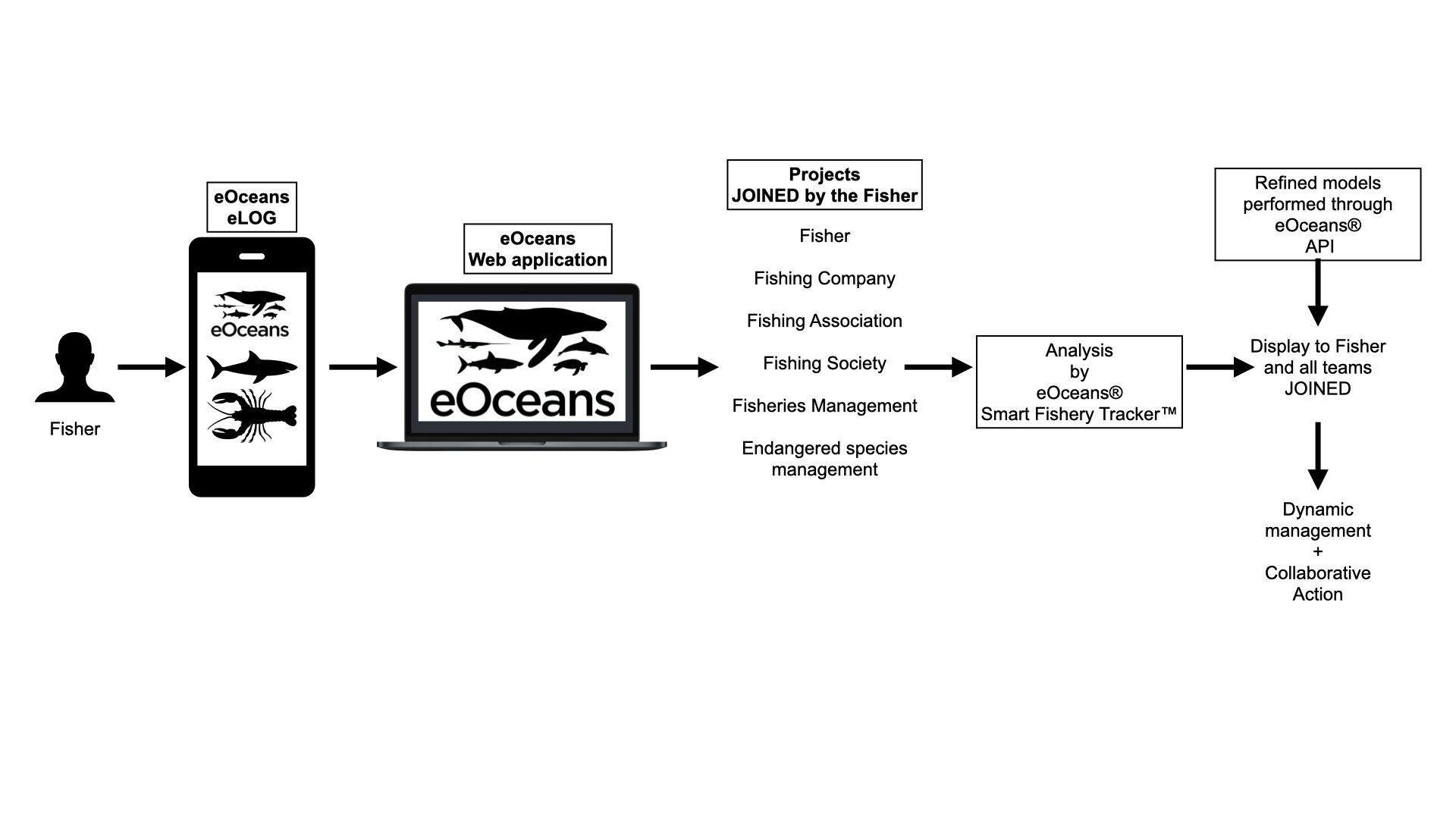Smart Fishery Tracker™
The future of fish is uncertain. For the first time in history, fishers are faced with the possibility of being excluded from their historic fishing grounds — displaced for conservation and other economic opportunities. But, fishers see and touch more of the ocean than any other stakeholder and should be considered an important ally in ocean monitoring, management, and conservation. The eOceans® Smart Fishery Tracker™ was designed to help position fishers in this role, to effectively and efficiently improve their efforts, eliminate the barriers that lead to unreported and unregulated fisheries, and enable them to play a critical role in the management and conservation of our ocean.
Fishers have been the primary ocean explorers and knowledge holders throughout history. Photo: Erik Lukas, Ocean Image Bank.
A brief history — fish formed global economies
Throughout history, fishers have been the primary ocean explorers and knowledge holders.
For thousands of years, fishers fished without markedly depleting ocean health, but as fish became a commodity – to power global economies – fisheries rapidly expanded. While governments subsidized industrialized techniques to maximize exploitation efficiency and profit, they often dismissed local fishers' concerns regarding declining populations.
These concerns have often proved true decades later, necessitating these same governments to reduce quotas and implement moratoriums across diverse species groups with varying degrees of failure and success.
Future of fish is uncertain.
Today, the future of fish and overall ocean health is uncertain.
The future of fish is uncertain after centuries of misuse combined with growing climate change impacts and the fervent push to grow the ocean economy. For the last Photo: Ahmed Fareed, Unsplash.
After centuries of misuse combined with growing climate change impacts and the fervent push to grow the ocean economy, the ocean and its value to humans are expected to degrade rapidly if business-as-usual continues (Doney et al. 2009; Hoegh-Guldberg 2015; Oliver et al. 2018; Mendenhall et al. 2020). For these reasons, coastal countries are expanding ocean monitoring, management, and conservation strategies to balance ocean health with economic uses (Douvere 2008; Foley et al. 2010).
However, getting these decisions right is not trivial.
Ocean monitoring, management, and conservation needs fishers.
Fishers comprise one of the most diverse and largest ocean stakeholder/rightsholder groups by number, area they cover, and time spent at sea.
They see and touch more of the ocean than any other group. By all accounts, fishers are on the frontlines of ocean change, and, with few exceptions, their lives, livelihoods, and communities depend on fish populations that are abundant.
Thus, fishers should be considered an important ally in ocean monitoring, management, and conservation (Gutiérrez et al. 2011).
Yet, a history of misinformation, broken trust, and unsustainable practices (Worm et al. 2013; Agnew et al. 2009; Ward-Paige et al. 2013), has dissolved relationships and pitted fishers against other stakeholders, scientists, and decision makers (Pomeroy et al. 2007; Spijkers et al. 2018; Mendenhall et al. 2020).
Gathering perspectives.
To understand the contemporary situation, we deployed three approaches.
First, we reviewed available materials on fisheries written by scientists, managers, and fishers, including scientific and gray literature and online documentation (e.g., social media, blogs).
Second, we casually interviewed fishers, fisheries observers, non-fishers in fishing communities, managers, marine and social scientists, and non-governmental organizations that deal with fisheries. We also attended public events (e.g., conferences, town hall meetings) where fisheries-related regulations were discussed (e.g., marine protected areas, quotes, moratoriums). Our conversations covered 28 countries, but were primarily in Canada, the United States, Australia, New Zealand, and various Caribbean countries.
Third, we reviewed commercial fishing logbooks and analyzed large fisheries datasets to understand the value and limitations of the data that are collected by fishers, and worked with the fishers who collected the data to uncover their interests.
From these perspectives, we developed a series of analyses that comprise the Smart Fishery Tracker™ tool.
Fishers are influential, and increasingly marginalized.
Our investigations revealed that fishers are still generally regarded as influential in coastal communities, but that their role is in flux.
As discussions evolve about what activities are or will be permitted in the ocean, fishers are faced with the possibility of being excluded from historic fishing grounds for both conservation and economic opportunities (e.g., aquaculture, energy).
Fishers are also feeling targeted by increased fisheries monitoring, where they fear their data will be used against them and they object to the invasion of privacy.
Some fishing groups have become so distressed by these multi-pronged pressures that they have united within associations/societies to collect and process their own fisheries data to hold government scientists and managers accountable and make sure that their interests are upheld.
The Smart Fishery Tracker™
The Smart Fishery Tracker (Fig. 1) was designed for collaboration and privacy.
Figure 1. Example analysis from the Smart Fishery Tracker™. Analyses are found in the eOceans® dashboard and includes spatial and temporal trends of catch and bycatch, with reported animal conditions. For demonstration purposes, we show a few of the analyses performed for the Southwest Lobster Science Society, in Canada, using their fisheries data (shared with permission).
It is a suite of digital tools and analytics that equip fishers and fishing groups with timely, expert-developed analysis of their catch and bycatch data, along with other ocean patterns that interest them (e.g., illegal fishing, invasive species).
It uses the eOceans® platform (Fig. 2), where fishers and their collaborators interact with the platform in two ways.
Figure 2. Schematic of data flow in eOceans® Smart Fishery Tracker™. Fishers log catch, bycatch (species, number, condition) and other observations (e.g., whales, ghost gear, illegal fishers) in the mobile application while at sea. These data are saved in the eOceans® platform for their personal access. Data are streamed to supported projects, where they are analyzed and displayed for co-interpretation by project members.
The first is a mobile application (Fig. 3) where fishers can log their at-sea fishing effort, catch/bycatch, and other observations (e.g., whales, pollution), join projects to automatically share their data for analysis, and review and comment to help co-interpret the results.
Figure 3. Overview of the key components of the data entry part of the Smart Fishery Tracker™. The mobile app eLOG is used for data input by fishers. It automatically captures location, date, time, and other meta-data and the fisher or observer logs catch, bycatch, and other observations that feed the Smart Fishery Tracker™. The eLOG works offline and has precision of under 5 m.
The second is a web application where projects are launched and managed, and the results are reviewed and discussed. Projects can be created by anyone – fishers, fishing associations, managers, NGOs, scientists, consultants, etc. Projects only receive data from the fishers who have joined their project (i.e., it is an opt-in program).
The suite of analyses in the Smart Fishery Tracker combine summary and advanced modeling analysis with graphical and map summaries. The analyses include standardized assessments of catch, bycatch, and catch condition (e.g., size, maturity) using the data that are entered through the mobile application. It also includes analyses of the socioeconomic values of their ocean spaces (e.g., where and when they generally fish so as not to include exact sites) and anthropogenic threats (e.g., pollution, invasive species).
These results can be used for many purposes, from tracking quotas to voluntarily avoiding bycatch hotspots or moving gear that is near endangered species.
Scaling efforts and impact.
Because the ocean is complex and dynamic, the Smart Fishery Tracker™ not only helps fishers track any fishery or fishing area anywhere in the world, it also seamlessly works to track other ocean features in the same or adjacent areas.
Other eOceans® platform features that work well with the Smart Fishery Tracker™ include:
1) Community Channel, where fishers can broadcast interesting observations to their followers, which can be used to identify new, potentially invasive species, threats to the fishery, and bycatch that are to be avoided;
2) Comments tab, where fishers can comment on the results to help co-interpret their meaning or to improve data quality;
3) Timely Matters Notifications, where a text message can be sent to the team when a specific observation is logged, such as an endangered whale, that enables timely action (e.g., move gear);
4) Data Pipes, where external data sources, such as OBIS and ERDDAP, can piped into a project to extend baselines or to develop more advanced analyses (eg., fish with temperature and fisheries); and
5) other analyses and Trackers, like the MPA Health Tracker™, the Shark & Ray Tracker™, or the Blue Economy Tracker™, so fishers can easily and seamlessly participate in other dimensions of ocean tracking that matter to them.
A dent in IUU fishing.
Unreported and unregulated fishing often gets unfairly lumped in with illegal fishing and other criminal activities (IUU) (Song et al. 2020).
A lot of government scientists and managers are simply spread too thin with their workloads to manage all the fishers and fisheries. Therefore, a lot of fisheries simply don’t get monitored or regulated because of a lack of resources, not criminal activity.
The Smart Fishery Tracker™ offers a unique and affordable solution to effectively ending unreported and unregulated fishing since any fisher, in any fishery, anywhere in the world can now report their catch and, starting at less than $1000 per year, can have their analyzed for interpretation.
The future of fish.
The eOceans® platform has deployed different tools to identify and minimize errors, including using the metadata from the phone (e.g., location, date, time), flagging observation outliers, and an in-app field guide to help correctly identify species in the field.
This way, fishers and fishing teams can unite and get started tracking fisheries and fish populations, as well as other dimensions that may affect their fishery and access to fishing grounds — positively or negatively. Together, they can make informed decisions to benefit fish, fisheries, and fishers.
The Smart Fishery Tracker™ unites people to make informed decisions that benefit fish, fisheries, and fishers. Photo: Connor Holland, Ocean Image Bank.
eOceans — For the ocean. For us.






